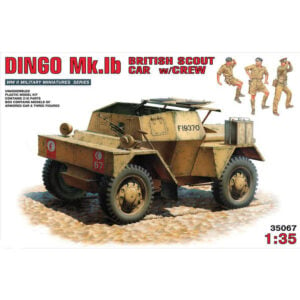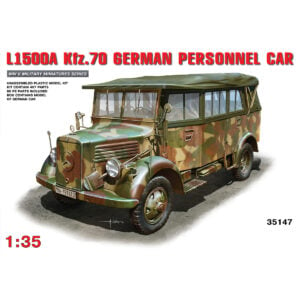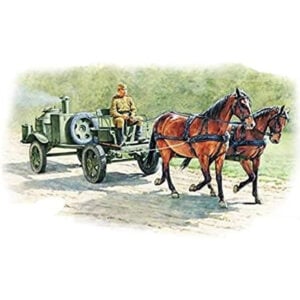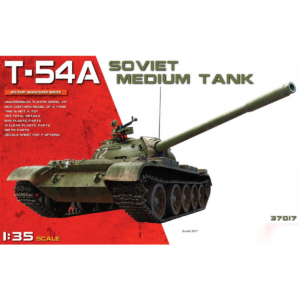Miniart Valentine Mk 6 Canadian Early Prodruction 1/35 Scale 35123
$63.99
Out of stock
Email when stock available
Description
Valentine was a British infantry tank of the Second World War. The first prototypes were built in 1940, and serial production was carried out in 1940-1944. In total, about 8,300 copies of this tank of all versions were built, which makes it one of the most produced British tanks during the Second World War. Valentine was powered – depending on the version – or an engine AEC A 190 with power or the GMC 6004 engine with 130 to 210 HP. The armament of the vehicle is – depending on the version – a single 40 mm, 57 mm or 75 mm cannon and two 7.92 and 7.7 mm machine guns.
The Valentine tank is based on the Cruiser Mk. II (A10) and due to the huge losses in equipment suffered by the British army in the French campaign in 1940, it was quickly put into mass production. The Valentine had relatively weak armor, a lot of weight, but it made up for this with decent mobility, a very low failure rate and a good upgrade potential. It was also cheap to produce, which additionally determined its production until 1944. A dozen or so versions of this tank were made in the course of serial production. One of the first, widely produced, was the Valentine Mk. III, which had a larger turret than the previous versions, which increased the crew from 3 to 4 people. Another important variation was the Valentine Mk. VIII with the 57mm 6-pounder ROQF cannon, instead of the 40mm gun. The last mass-produced version was the Valentine Mk. The XI, which featured a 75mm ROQF cannon and was most often used as a command tank. Valentine tanks were sent to the USSR under the Lend-and-Lease program, and they were also used by the Canadian army and the Polish Armed Forces in the West (PES).
Armored and mechanized troops of the Red Army began to be formed on a larger scale in the late 1920s and 1930s. Especially in the 1930s they developed dynamically. This was reflected both in the organizational structure and in the equipment. On the first of these planes, the formation of mechanized corps began in 1932, the structure of which evolved until the outbreak of World War II. As for the equipment – new types of tanks were introduced, such as the BT-5, BT-7, T-26 and the T-28 multi-turret tank. Very successful tanks also introduced into the line shortly before the start of the war with the Third Reich – of course, we are talking about the KW-1 and T-34. However, despite the fact that at the time of the German aggression, the Soviet armored forces had a quantitative advantage over the aggressor, they suffered huge losses in men and equipment in the first period of the war. They can be explained by the shortcomings of a well-trained officer cadre (the aftermath of the Stalinist purges of the 1930s), worse individual training of Soviet tankers compared to their German opponents, or inferior tactics used by the crews of Soviet tanks. Also, the doctrine of their use was not as consistent and well-grounded in training as in the German army. We can also add to this the rather poor ergonomics of Soviet vehicles or the shortage of short and long-range radio stations in armored forces. With time, however, these errors began to be more or less successfully corrected. For example – from the spring of 1942, armored armies began to be formed, which were to perform primarily offensive tasks and which constituted a slightly more ergonomic structure than the previous mechanized corps. However, it seems reasonable to say that until the end of the war, the Red Army emphasized the quantitative advantage rather than the qualitative advantage over the enemy, although it introduced such successful tanks as the T-34/85 or IS-2 into service during the warfare. This is clearly visible, for example, during the Battle of Kursk in July 1943.
Assembly and painting required. Kit does not include model cement glue, paint, and tools. Adult supervision where required.
Contents subject to change.
Related products
-
Miniart British Scout Car Dingo MK. 1B 1/35 Scale 35067
$50.99 Sold Out - More Info1 review -
Miniart L1500A Kfz.70 German Personnel Car 1/35 Scale 35147
$63.99 Add to cart -
Miniart Horses Drawn Field Kitchen KP-52 1/35 Scale 35057
$50.99 Add to cart -
Miniart T-54A Soviet Medium Tank 1/35 Scale 37017
$74.99 Sold Out - More Info














